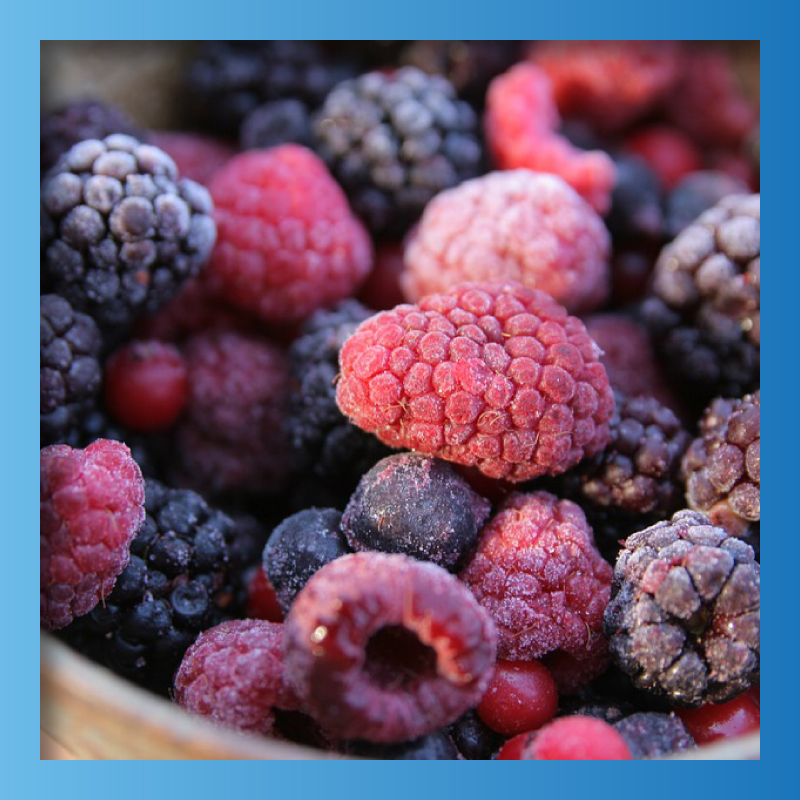Chemistry is an essential component for the food processing industry, which looks to improve product quality, reduce costs, and increase output. One such option is the use of nitrogen. As Chris Johnson, Food Industry Specialist for Air Products, discussed in a seminar in October 2009, nitrogen is proving a beneficial ingredient for the prepared foods sector, with a range of creative applications, including freezing, packaging, mixing, coating, and grinding. Nitrogen can be used to process a wide variety of foods, including meat, poultry, seafood, fruits, vegetables, pasta, dairy products, baked goods, and prepared meals.
Freezing
Cryogenic (i.e., very low-temperature) freezing results in smaller weight losses from dehydration than traditional mechanical freezing. Frozen food processors can thus preserve the quality of their products with a freezing system that uses environmentally friendly liquid nitrogen.
Due to its own extremely cold temperature, liquid nitrogen can enable a cryogenic system to freeze food within minutes, instead of the hours traditionally required with other systems. The faster freezing causes the formation of small ice crystals, which then help ensure product moisture and quality are maintained longer.
Further, liquid nitrogen can be used to remove heat from other processes to help prevent microbial growth, reduce cycle times, and/or increase production throughput.
For example, Excellent Foods in Burbank, Wash., used a liquid nitrogen freezer for its Apple Fries products. These peeled, cut, coated, deep-fried, and finished apple wedges needed moisture locked in before going to market. With an immersion tunnel system, they took only three to four minutes from peel to freeze.
Custom Pack in Biloxi, Miss., switched over the years from canning shrimp to a variety of freezing techniques, including the use of a cryogen straight tunnel freezer for a time. Eventually, the company settled on cryogenic technology with a nitrogen-based immersion freezer to process individually quick-frozen (IQF) shrimp. This proved particularly well-suited for the wet and fleshy seafood. As a result, production capacity increased from 5,000 to 8,000 pounds per hour.
Holten Meat in Suaget, Ill., began using liquid nitrogen freezing tunnels in 1974. The technology allows the company to ship its frozen Thick N’ Juicy hamburger patties and maintain their freshness 90 days from code date, providing a much longer shelf life than fresh patties.
Packaging
Gaseous nitrogen can be used in a wide range of packaging processes, including Modified Atmosphere Packaging (MAP), to help preserve the quality of food.
MAP is a preservation technique for minimally processed foods, including fish, meat, fruits, and vegetables. The specific gas or mix of gases in the package depends on that package’s materials, the product, and the temperature at which it will be stored, but in all cases the purpose of the technique is to change the composition of the air around the food.
Food products spoil in different ways, whether through microbial growth, discoloration, oxidation, or moisture loss. By replacing the breathable atmosphere in a package with a pure gas or a gas mixture, including nitrogen, the shelf life of products can be significantly extended, helping them look, smell, and taste good far longer than they would otherwise.
Mixing, coating, and grinding
In mixing applications, liquid nitrogen is used to chill sauces and gravies to stop the cooking process while reducing cool cycle times.
In coating applications, the low temperature of liquid nitrogen allows it to enrobe individually quick-frozen (IQF) products in sauces while they freeze, helping produce an even coating.
During grinding, meanwhile, liquid nitrogen can be used to eliminate frictional heat to help improve the throughput of mills, while also preventing the loss of flavor and aroma components in food additives, ingredients, and functional foods.
Specialized equipment can be coupled with liquid nitrogen to help optimize IQF and non-IQF food freezing, crust freezing, chilling, coating, mixing, and forming. Regardless of size, both the equipment and the nitrogen can be configured in a mode that matches the scale of the food processing operation.
Source: http://www.airproducts.com/~/media/downloads/article/b/en-benefits-of-nitrogen-american-chemistry-reprint-332-10-040.pdf


